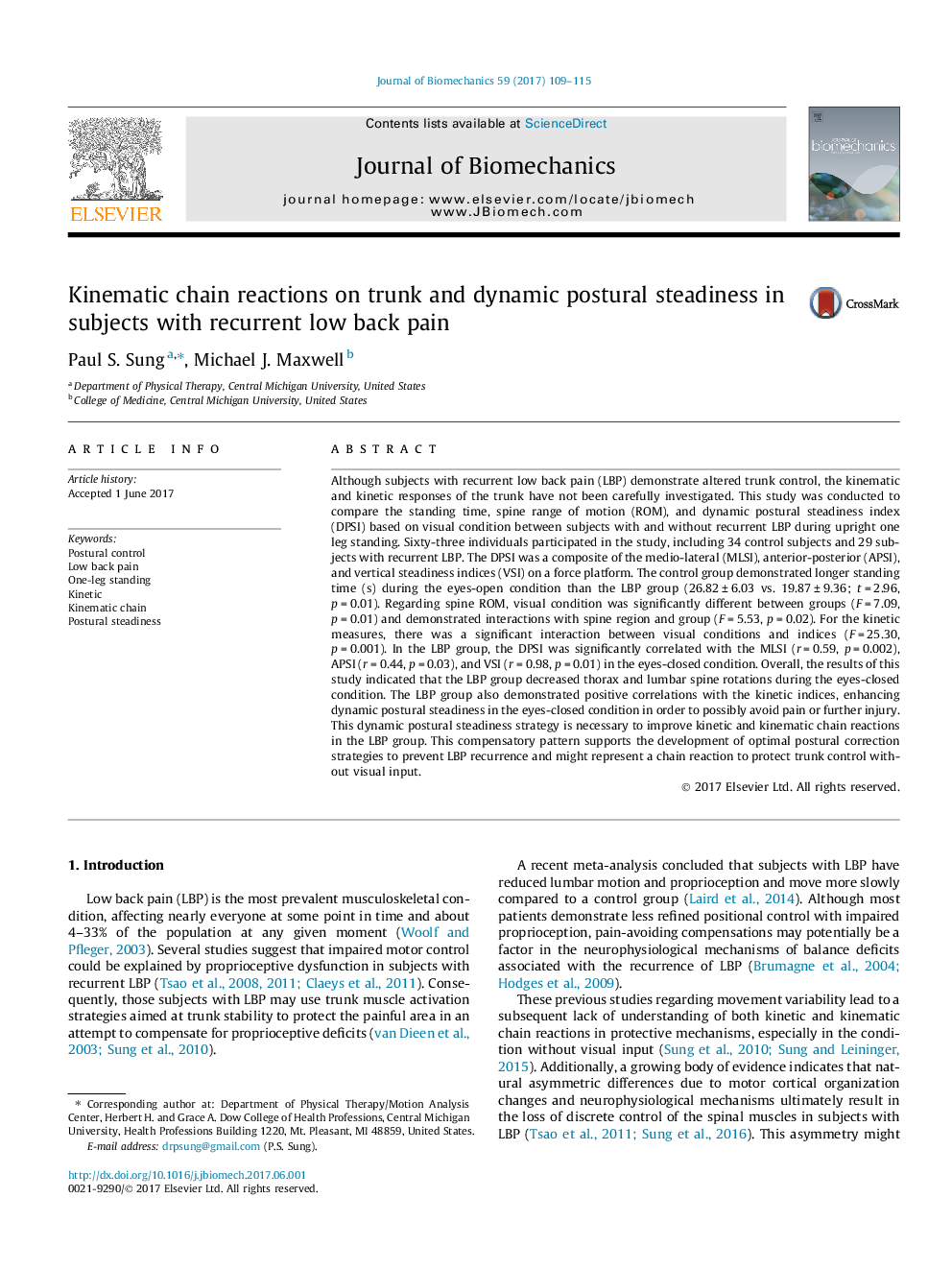| Article ID | Journal | Published Year | Pages | File Type |
|---|---|---|---|---|
| 5032264 | Journal of Biomechanics | 2017 | 7 Pages |
â¢The trunk rotation in the eyes-closed condition decreased in the LBP group.â¢The visual condition is important for dynamic postural steadiness and trunk motion.â¢The dynamic postural steadiness is highly associated with vertical steadiness.â¢The kinetic and kinematic chain reactions could help to develop a postural correction strategy.
Although subjects with recurrent low back pain (LBP) demonstrate altered trunk control, the kinematic and kinetic responses of the trunk have not been carefully investigated. This study was conducted to compare the standing time, spine range of motion (ROM), and dynamic postural steadiness index (DPSI) based on visual condition between subjects with and without recurrent LBP during upright one leg standing. Sixty-three individuals participated in the study, including 34 control subjects and 29 subjects with recurrent LBP. The DPSI was a composite of the medio-lateral (MLSI), anterior-posterior (APSI), and vertical steadiness indices (VSI) on a force platform. The control group demonstrated longer standing time (s) during the eyes-open condition than the LBP group (26.82 ± 6.03 vs. 19.87 ± 9.36; t = 2.96, p = 0.01). Regarding spine ROM, visual condition was significantly different between groups (F = 7.09, p = 0.01) and demonstrated interactions with spine region and group (F = 5.53, p = 0.02). For the kinetic measures, there was a significant interaction between visual conditions and indices (F = 25.30, p = 0.001). In the LBP group, the DPSI was significantly correlated with the MLSI (r = 0.59, p = 0.002), APSI (r = 0.44, p = 0.03), and VSI (r = 0.98, p = 0.01) in the eyes-closed condition. Overall, the results of this study indicated that the LBP group decreased thorax and lumbar spine rotations during the eyes-closed condition. The LBP group also demonstrated positive correlations with the kinetic indices, enhancing dynamic postural steadiness in the eyes-closed condition in order to possibly avoid pain or further injury. This dynamic postural steadiness strategy is necessary to improve kinetic and kinematic chain reactions in the LBP group. This compensatory pattern supports the development of optimal postural correction strategies to prevent LBP recurrence and might represent a chain reaction to protect trunk control without visual input.
